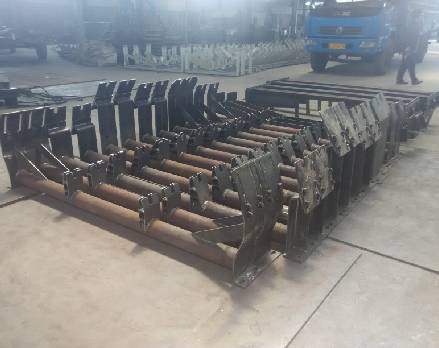 Afrikaans
Afrikaans  Albanian
Albanian  Amharic
Amharic  Arabic
Arabic  Armenian
Armenian  Azerbaijani
Azerbaijani  Basque
Basque  Belarusian
Belarusian  Bengali
Bengali  Bosnian
Bosnian  Bulgarian
Bulgarian  Catalan
Catalan  Cebuano
Cebuano  Corsican
Corsican  Croatian
Croatian  Czech
Czech  Danish
Danish  Dutch
Dutch  English
English  Esperanto
Esperanto  Estonian
Estonian  Finnish
Finnish  French
French  Frisian
Frisian  Galician
Galician  Georgian
Georgian  German
German  Greek
Greek  Gujarati
Gujarati  Haitian Creole
Haitian Creole  hausa
hausa  hawaiian
hawaiian  Hebrew
Hebrew  Hindi
Hindi  Miao
Miao  Hungarian
Hungarian  Icelandic
Icelandic  igbo
igbo  Indonesian
Indonesian  irish
irish  Italian
Italian  Japanese
Japanese  Javanese
Javanese  Kannada
Kannada  kazakh
kazakh  Khmer
Khmer  Rwandese
Rwandese  Korean
Korean  Kurdish
Kurdish  Kyrgyz
Kyrgyz  Lao
Lao  Latin
Latin  Latvian
Latvian  Lithuanian
Lithuanian  Luxembourgish
Luxembourgish  Macedonian
Macedonian  Malgashi
Malgashi  Malay
Malay  Malayalam
Malayalam  Maltese
Maltese  Maori
Maori  Marathi
Marathi  Mongolian
Mongolian  Myanmar
Myanmar  Nepali
Nepali  Norwegian
Norwegian  Norwegian
Norwegian  Occitan
Occitan  Pashto
Pashto  Persian
Persian  Polish
Polish  Portuguese
Portuguese  Punjabi
Punjabi  Romanian
Romanian  Russian
Russian  Samoan
Samoan  Scottish Gaelic
Scottish Gaelic  Serbian
Serbian  Sesotho
Sesotho  Shona
Shona  Sindhi
Sindhi  Sinhala
Sinhala  Slovak
Slovak  Slovenian
Slovenian  Somali
Somali  Spanish
Spanish  Sundanese
Sundanese  Swahili
Swahili  Swedish
Swedish  Tagalog
Tagalog  Tajik
Tajik  Tamil
Tamil  Tatar
Tatar  Telugu
Telugu  Thai
Thai  Turkish
Turkish  Turkmen
Turkmen  Ukrainian
Ukrainian  Urdu
Urdu  Uighur
Uighur  Uzbek
Uzbek  Vietnamese
Vietnamese  Welsh
Welsh  Bantu
Bantu  Yiddish
Yiddish  Yoruba
Yoruba  Zulu
Zulu snub pulley for belt conveyor
Understanding Snub Pulleys in Belt Conveyor Systems
In the realm of material handling and industrial machinery, belt conveyors are pivotal for transporting goods efficiently across various distances. Among the numerous components that play a crucial role in the functionality of these systems, snub pulleys are often overlooked yet incredibly vital. This article delves into the significance of snub pulleys in belt conveyor systems, their functions, and benefits.
What is a Snub Pulley?
A snub pulley is a type of pulley used in belt conveyors designed to redirect the belt at a particular angle. Usually positioned at the tail or the drive end of the conveyor, snub pulleys help increase the contact area of the belt with the drive pulley. This enhanced contact improves friction, allowing for better power transmission and belt traction.
Functions of Snub Pulleys
1. Increasing Belt Tension One primary function of a snub pulley is to improve the tension on the belt. By changing the angle at which the belt wraps around the drive pulley, snub pulleys increase the contact surface area. This increase in contact results in higher tension, which is crucial for preventing slip and ensuring that the belt operates smoothly.
2. Improving Grip and Traction Snub pulleys enhance the traction between the belt and the drive pulley, allowing the system to handle heavier loads with ease. This improved grip ensures that the conveyor can operate at optimal performance levels without the risk of slippage, especially during startup or heavy conveying conditions.
3. Facilitating Belt Alignment Misaligned belts can cause significant wear and tear on the conveyor system, leading to costly repairs and downtime. Snub pulleys help maintain proper belt alignment by guiding the belt as it travels over the pulleys. This alignment minimizes unnecessary friction and wear, extending the life of both the belt and the conveyor components.
snub pulley for belt conveyor

4. Enabling Direction Changes In many conveyor systems, it is necessary to change the path of the belt to navigate around obstacles or fit into limited spaces. Snub pulleys serve this purpose by redirecting the belt, allowing for flexible system design.
Benefits of Using Snub Pulleys
1. Enhanced Efficiency By improving belt tension and traction, snub pulleys contribute to the overall efficiency of the conveyor system. A well-functioning conveyor that operates without slippage ensures timely and reliable movement of materials.
2. Reduced Maintenance Costs Properly functioning snub pulleys can significantly reduce wear and tear on the conveyor belt and other components, resulting in lower maintenance and replacement costs over time.
3. Flexibility in Design The presence of snub pulleys allows for greater design flexibility in conveyor systems. Operators can configure the layout to navigate through complex environments without compromising system performance.
4. Increased Load Capacity With improved traction and belt tension, snub pulleys enable conveyors to handle increased loads, making them suitable for a wide range of industrial applications.
Conclusion
In summary, snub pulleys are essential components of belt conveyor systems that significantly enhance performance and efficiency. Their roles in increasing belt tension, improving grip, facilitating alignment, and allowing for directional changes make them invaluable in various industrial applications. Understanding the importance of snub pulleys can help operators maintain their belt conveyor systems more effectively, leading to operational efficiency and reduced costs. Whether in manufacturing, mining, or logistics, investing in quality snub pulleys ensures that conveyor systems run smoothly and reliably, ultimately contributing to an organization’s success. As industries continue to evolve and demand more from their material handling systems, the importance of components like snub pulleys cannot be overstated.
-
Revolutionizing Conveyor Reliability with Advanced Rubber Lagging PulleysNewsJul.22,2025
-
Powering Precision and Durability with Expert Manufacturers of Conveyor ComponentsNewsJul.22,2025
-
Optimizing Conveyor Systems with Advanced Conveyor AccessoriesNewsJul.22,2025
-
Maximize Conveyor Efficiency with Quality Conveyor Idler PulleysNewsJul.22,2025
-
Future-Proof Your Conveyor System with High-Performance Polyurethane RollerNewsJul.22,2025
-
Driving Efficiency Forward with Quality Idlers and RollersNewsJul.22,2025





























